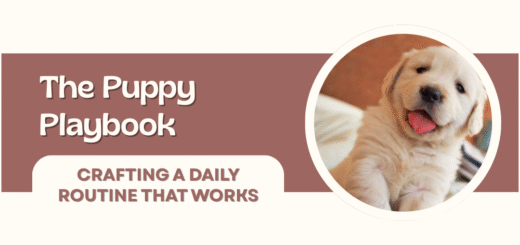10 Essential House Rules Every Dog Owner Should Consider
Dogs thrive on structure—without clear boundaries, even the best-behaved pup can turn your home into chaos. Whether you’re raising a new puppy or retraining an older dog, these rules help create harmony while keeping your pet safe and happy.
1. Furniture Etiquette: Couch Privileges Aren’t Automatic
Some dogs are couch potatoes; others learn to respect upholstery. Decide early:
- Full access? Fine, but expect fur and the occasional muddy paw print.
- By invitation only? Teach a cue like “Up!” so they don’t jump up uninvited.
- Strictly off-limits? Use a firm “Off” command and provide a cozy dog bed nearby.
Pro tip: Consistency is key. If you ban the sofa but your partner sneaks cuddles, your dog will exploit the loophole.
2. Greeting Guests Without the Chaos
A jumping dog might seem friendly, but it’s risky for kids or elderly visitors. Train alternatives:
- “Sit to greet”: Reward calm sitting when someone enters.
- A designated “place”: Send them to a mat until guests are settled.
- Controlled excitement: Allow jumping only when you say “Go say hi!”
Real-life fix: For doorbell barkers, practice “Quiet” with high-value treats.
3. No Begging at the Table (Yes, It’s Possible)
Those soulful eyes are hard to resist, but table scraps lead to bad habits and upset stomachs. Try:
- Feed them first: A full dog is less likely to beg.
- “Go to your spot”: Train them to retreat to their bed during meals.
- Healthy alternatives: Offer a chew toy or stuffed Kong to keep them busy.
Warning: Once you give in, begging becomes a lifelong negotiation.
4. Crate Training: Their Safe Space, Your Sanity
Done right, crates become a den—not a punishment. Essentials:
- Size matters: Enough room to stand and turn, but not so big they’ll potty in a corner.
- Positive associations: Toss treats inside and let them explore voluntarily.
- Routine use: Ideal for naps, travel, or when you need them out from underfoot.
Myth buster: Crates aren’t cruel. Dogs instinctively seek enclosed spaces for security.
5. Room Restrictions: Kitchens and Bedrooms Aren’t Free-for-Alls
Boundaries prevent trouble:
- Kitchens: Hot stoves, trash raids, and counter surfing are hazards. Use baby gates.
- Bedrooms: If you don’t want fur on your pillows, establish a “no entry” rule early.
- Bathrooms: Toilet water isn’t a drink—keep lids closed.
Bonus: Designate a “dog zone” with their bed and toys to reinforce where they belong.
6. Chewing: Redirect, Don’t Punish
Puppies explore with their mouths; adults chew for stress relief. Manage it:
- Off-limits: Shoes, remote controls, and furniture legs.
- Fair game: Bully sticks, rubber toys, and frozen carrots.
- Swap trick: Catch them chewing a shoe? Trade it for a toy and praise.
Teething hack: Freeze a wet washcloth for sore gums.
7. Family Unity: No Mixed Messages
If one person allows couch snuggles and another scolds, your dog gets confused. Hold a family meeting to agree on:
- Core rules: What’s always okay/never okay?
- Enforcement: Use the same commands (e.g., “Down” vs. “Off”).
- Rewards: Everyone should praise good behavior consistently.
Pitfall: Kids often sneak treats. Assign them “approved” tasks like filling the dog’s puzzle toy.
8. Routine with Flexibility
Dogs love predictability, but life isn’t always rigid. Balance:
- Basics: Regular meal times, walks, and bedtime.
- Adaptability: Occasionally vary walk times so they don’t panic if you’re late.
- Signals: Teach “Not now” for days when their usual schedule is disrupted.
Example: If your dog expects a 6 PM walk but you’re stuck in traffic, practice calm waiting.
9. Sleep Rules: Overnight Peace
Where should they sleep? Decide based on your lifestyle:
- Crated: Best for puppies or dogs prone to midnight mischief.
- Dog bed: Ideal for those who settle through the night.
- Your bed: Only if you’re okay with sharing space (and blankets) forever.
Transition tip: Use white noise or a ticking clock to soothe anxious pups at night.
10. Potty Protocol: Tailored to Your Home
City apartment or suburban yard? Adjust accordingly:
- Outdoor potty: Stick to a schedule (puppies every 2 hours, adults every 6–8).
- Indoor solutions: Pee pads or artificial grass for high-rises. Train with a cue like “Go potty.”
- Clean accidents properly: Enzyme cleaners remove odors that attract repeat offenses.
Emergency fix: For late-night urges, install a doggy door or use a litter box for small breeds.
Final Thought:
Rules aren’t about restriction—they’re about clarity. A dog who understands boundaries is more confident, better behaved, and happier. Start early, stay consistent, and enjoy a well-mannered companion.


